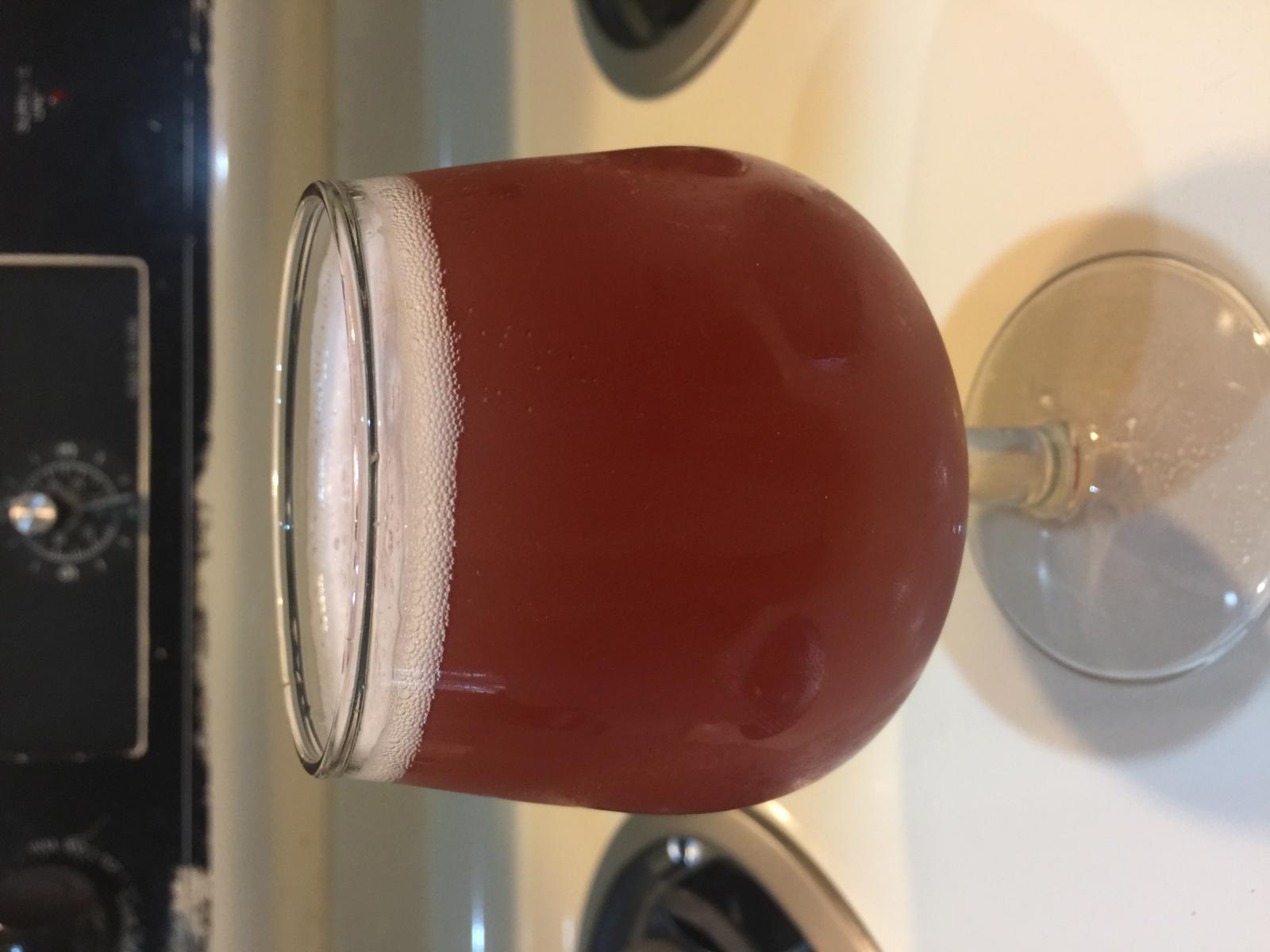Looks so good, what hops did you use? Would you mind posting all of the recipe?
Sure thing! I messed several targets on this one, but it ended up great. I am copying from where I have the recipe elsewhere (on a blog that isn't ready to be shown ;-) ). I can try to rewrite the recipe to take the mistakes and make them the actual recipe. I was still getting my system down at the time. I was having issues between what Beersmith was telling me and what I should actually expect from my system. I basically need to add about 5.5 degrees F to whatever temp the software says to heat my mash water. Also, this is before I made 5.75 gal batches to end up with 5 gal. Here I plan for 5 gal and only end up with 4.25 gal.
Target / Measure
Batch size: 5 / 4.25 gal
Target OG: 1.053 / 1.059
Final Gravity: 1.007 / 1.009
ABV: 6.0 / 6.54 %
Apparent attenuation: 84 %
Target IBU: 29
Estimated SRM: 4.3
(this does not account for color due to hibiscus)
Malt Bill
German Pilsner (2-row) 7 lbs
Vienna Malt 2 lbs
Wheat, Malted (Light) 1 lbs
Hop Schedule
East Kent Goldings 1.00 oz @ 60 min
East Kent Goldings 0.50 oz @ 15 min
Fuggle 0.50 oz @ 15 min
East Kent Goldings 0.50 oz dry hop for 5 days
Fuggle 0.50 oz dry hop for 5 days
Additional ingredients
Hibiscus (dried) 12 grams/gallon
Mash
Pre-heated mash tun with hot/steaming water
12.5 qt (3.125 gal) mash in
160.2 F -> target 149 F (actual aim was 148, but increased target slightly for loss of heat while transferring to mash tun)
Hit 148.5 F. Temperature dropped to about 143.5 F after the mash was complete.
75 minute mash
Collect first runnings (OG 1.086)
Batch Sparge
1.12 gal @ 168 F for 15 min
3.05 gal @ 168 F for 15 min
Water Treatment (mash and sparge water)
Calcium 56.8 ppm
Magnesium 7.3 ppm
Sodium 32.7 ppm
Sulfate 84.0 ppm
Chloride 54.8 ppm
Fermentation
Wyeast 3711 French Saison (liquid yeast - 100 billion cells) - pitched at 72 F






